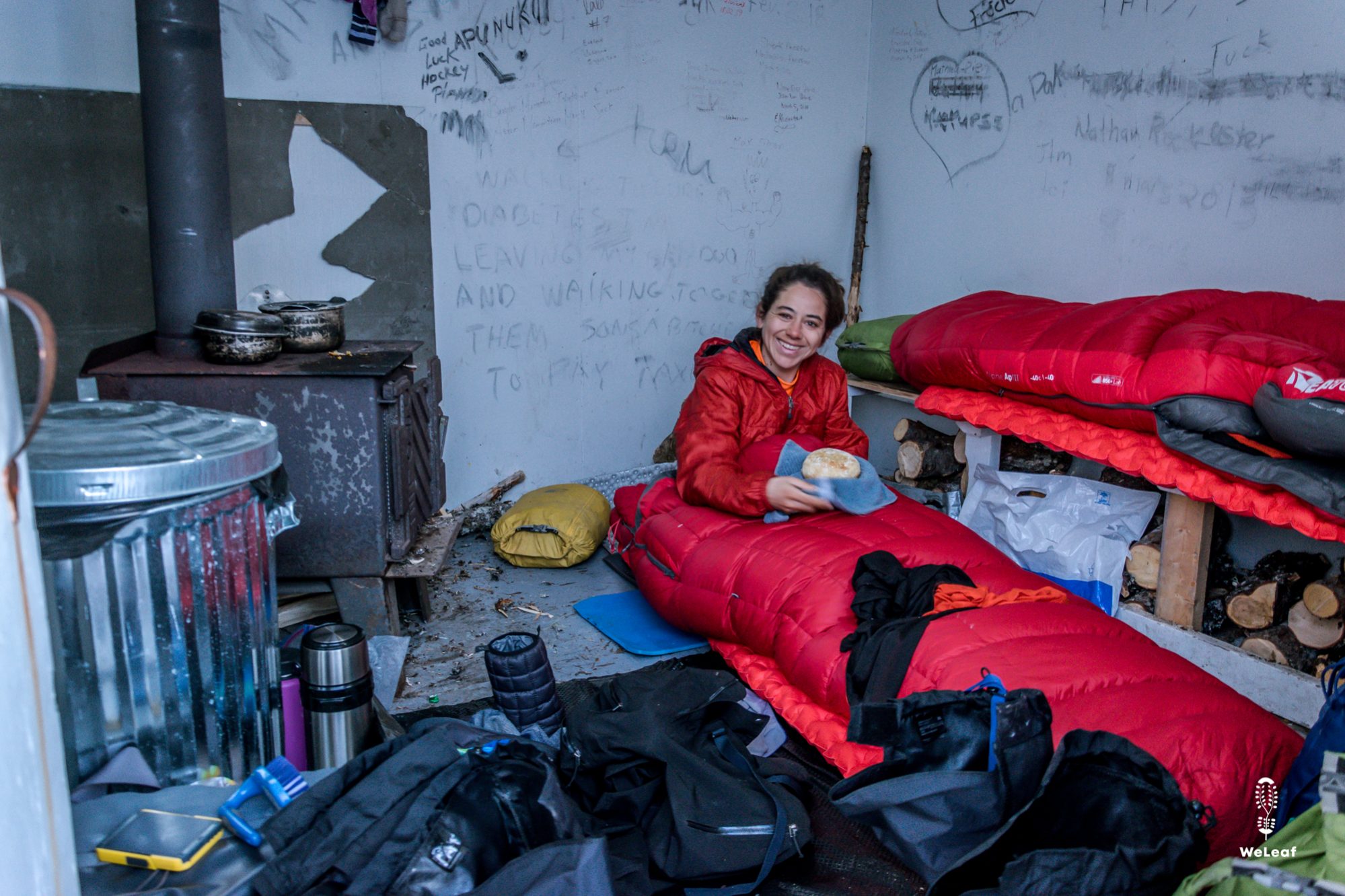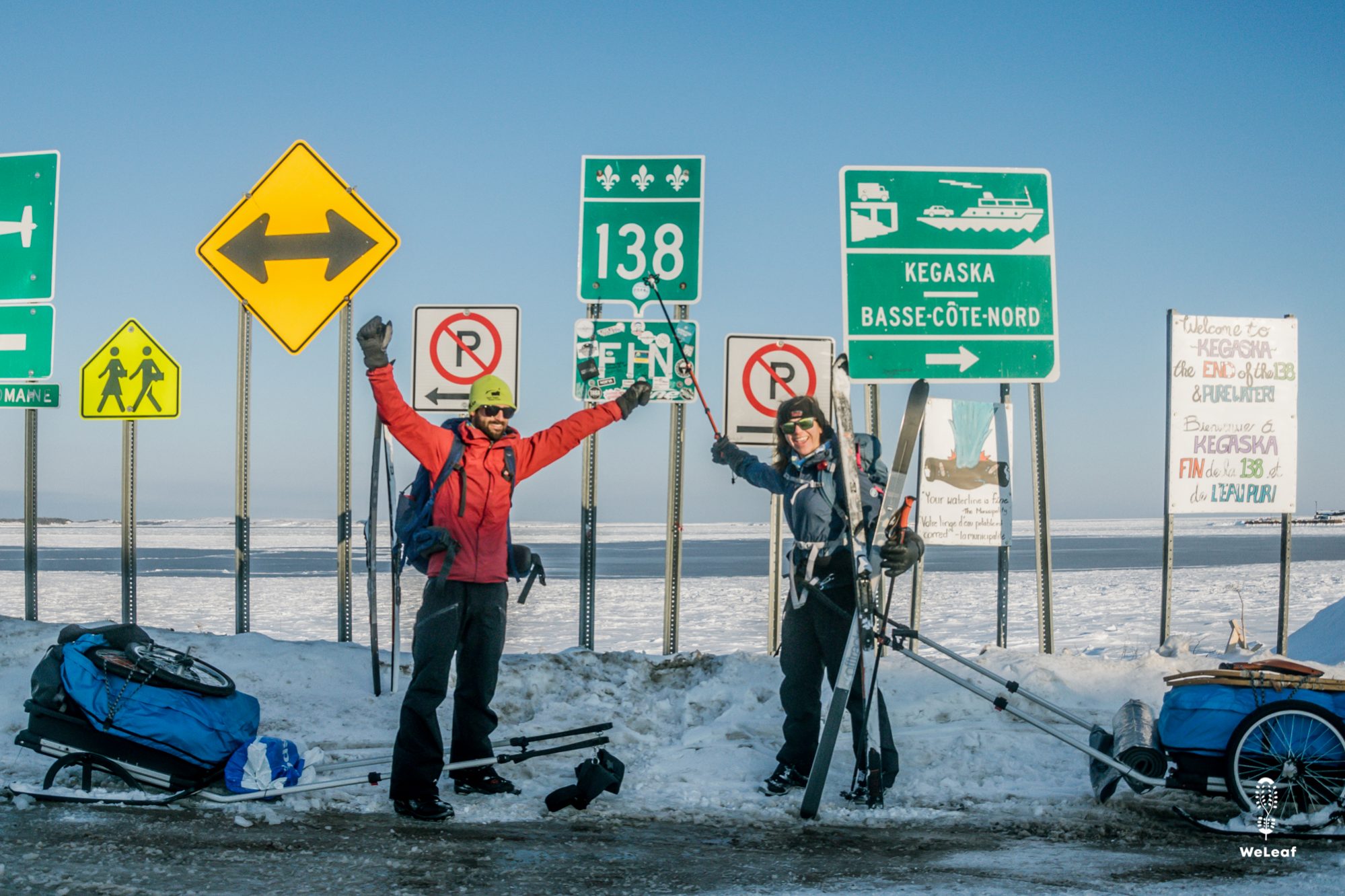
Homo Sapiens

How to camp in extreme cold
May 4, 2020
Love of wood
May 29, 2020
Tuesday March 3th - Kegaska
We are parading in front of a bunch of traffic signs. We take pictures and grab some video shots on the camera. Between the hustle and bustle of traffic signals, it is one sign that matters to us. In white and green it says "Fin route 138". It is the end of the road. The road follows the north shore of the Saint Lawrence River, a river as wide as a sea that eventually flows into the ocean. Just like the river, the highway also follows to the mouth of the ocean, yet it ends here in Kegaska. There is a missing link of 425 kilometers between Kegaska and Vieux-Fort. An uncountable number of lakes and other water bodies makes it nearly impossible and very expensive to connect the road. People live between the two ends of the road, spread over 9 villages. With a total of 4,000 inhabitants, they live in an area as long as the Netherlands and Belgium together and are inaccessible to the outside world by land. Except in winter, all those lakes freeze over and form natural bridges. A fierce arctic cold and a layer of snow ensures that this small group of residents can leave their village and test the freedom on their snow cars, the snowmobile. Full of curiosity to explore this unknown world, we are standing at the footstep of “la route blanche”, the white trail. Kegaska, where we are now, is the first English-speaking village we encounter in Quebec, but on the Route Blanche, the communities are a mix of French-speaking Quebecois, English-speaking Canadians, and French or English-speaking Innu, the native people. They are all close neighbors and strongly connected as a community of the "Basse Côte-Nord", yet they are each other's opposites.
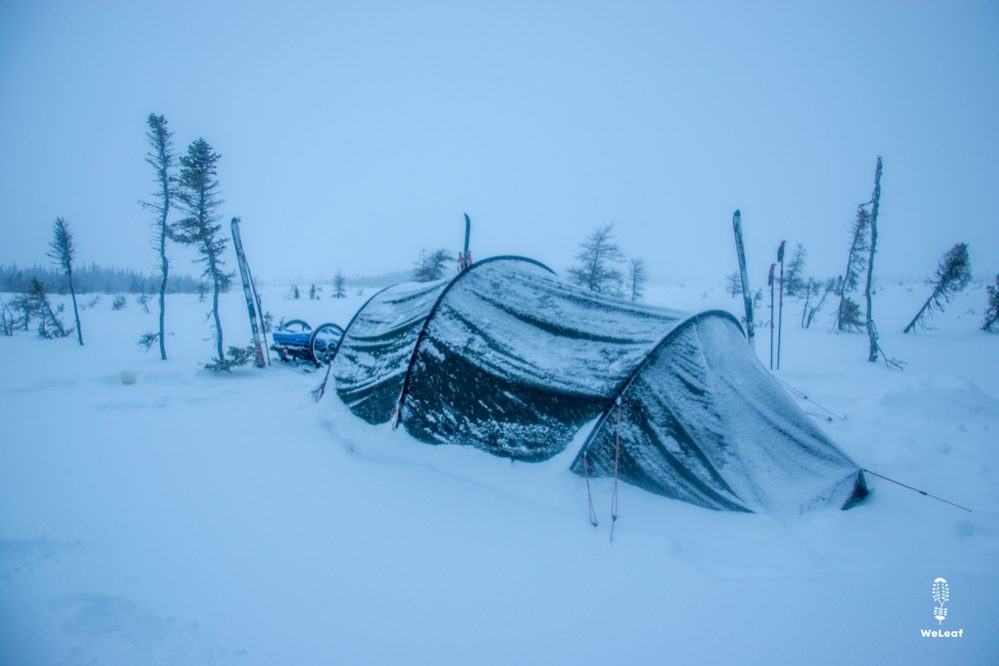
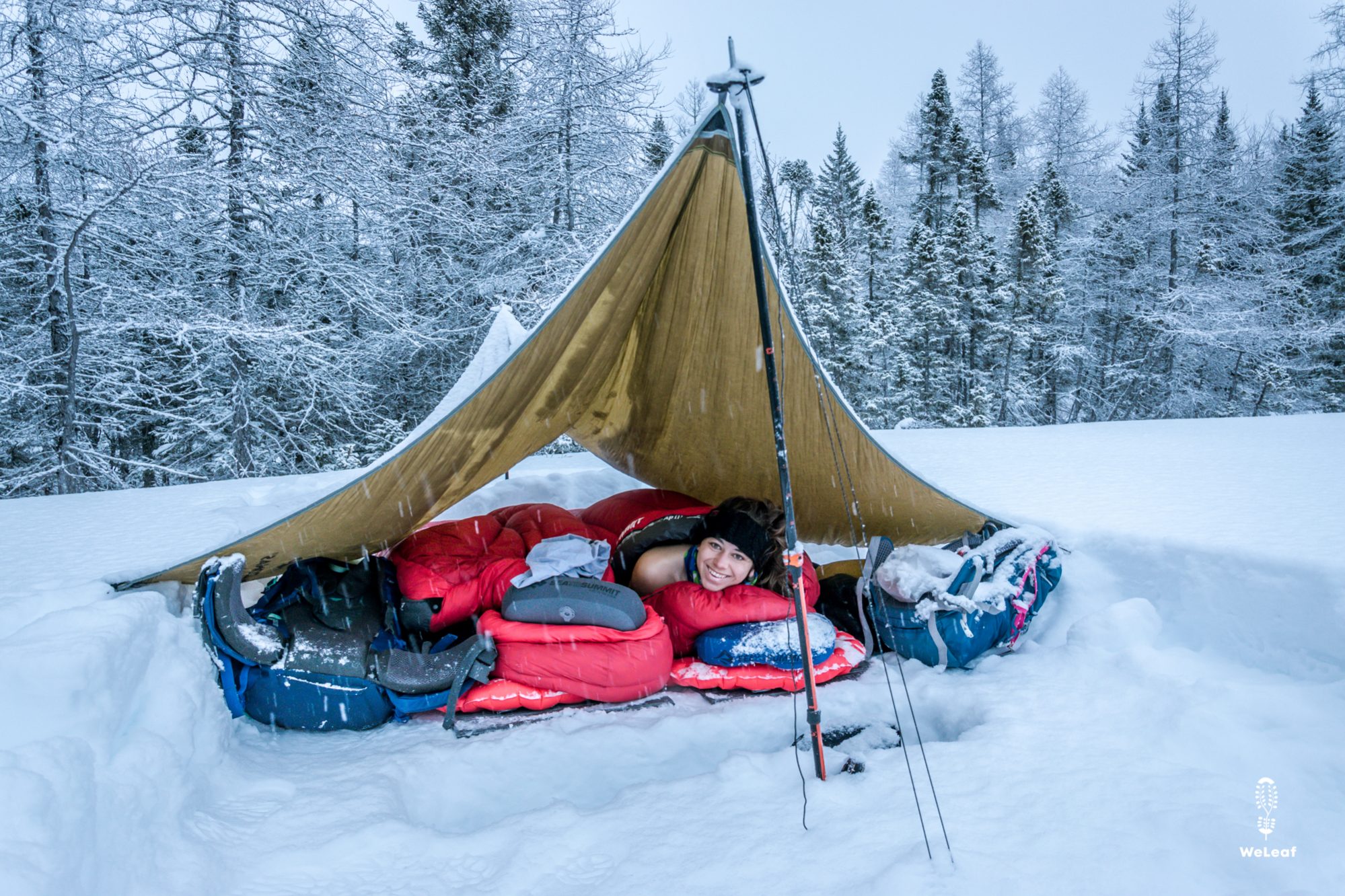
When the daylight is fading when we still have to find a place to sleep. We skied long to be here on time. A serious storm is approaching and we must find a shelter. Just as it seems we won't find a place, Charles stops to ask us what we're looking for. "A place protected from the wind to pitch our tent," says Zoë. “I have a shed,” Charles says standing upright on his snowmobile (ski-doo) and shrugging. "That seems fine to me," says Zoë with a smile. "Okay, follow me." He manoeuvres a few times with his ski doo to turn around and then drives up his "driveway". Now that there is snow and there are no lines and barricades, everything is actually a driveway. He leads us in his gigantic shed full of wood, machines and junk. There is even a wood stove in the barn and he asks us “would this be enough?". We nod enthusiastically. "Oh yes perfect, I’ll clean the floor and then we can sleep right here" says Olivier. Charles lights the wood fire for us. He is a heavy man with thick used hands. Every time he wants to say something, he nods, pauses and then starts. He ends his story with a crooked smile and a sigh. He says that he has just bought this house and it is supposed to serve as his fisherman's house in the summer, now they are just on vacation. He asks us where we slept the previous nights. We are happy to tell how we slept under our tarp for the first time last night when it suddenly snowed. It was only -5 degrees and according to the weather predictions it would be like this all day. In our tent we often get condensation during such warm nights and because a tarp is only a roof, the wind can blow through easily. Charles shakes his head, he doesn't understand it. When his wife Alice hears that Charles put us in the shed, she is ashamed and offers us an upgrade to the basement, it's warmer there. Probably too hot for us, but we accept the offer. They also invite us for dinner.
The kitchen table is where we discover cultures, and also here the stories start. Charles grew up in Blanc-Sablon, where the paved route 138 starts again. For secondary school he had to go to Havre-Saint-Pierre, 250 kilometers more South on the North Shore. He had to take the plane home once every 4 months. It was a boarding school where he got up at 6 a.m. every day and had to go to bed at 8 a.m. He remembers how difficult it was for him to make his own bed and wash clothes. At home, these were women's duties, his sister put a clean set of clothes on his bed and he left to chop wood and do other "men" chores. Charles never finished his college. "I couldn't swim and I'm afraid of water” and without a swimming diploma he couldn't finish college. He worked as an electrician, a feint worker and now a fisherman. "Why on earth are you a fisherman when you are afraid of water?" Olivier asks with a laugh. "I am also seasick, but it makes money." Charles doesn't seem to have financial problems, having a four million dollar crab license. He fishes crab, cod and halibut. Everyone used to fish cod until the population was almost extinct. Crab was worth nothing, you didn't get anything for it, but now it’s gold. For halibut, a huge flatfish, the licenses are limited to just 32 hours per year. But fishing halibut seems so easi that fishermen often hit their quota before the 32 hours. Another gold mine. Fishing is a tough world here, but if you play it right, you'll be on the boat for a few months and then you'll be rich and free the rest of the year. As a captain and license holder, Charles must be on the boat himself. Charles has a license for crab, but two of his crew also have a license, which he bought in their name. While we talk about fishing, the seal industry and the Innu, the wind and snow is blowing against the windows. We will stay one more night before starting the Route Blanche.
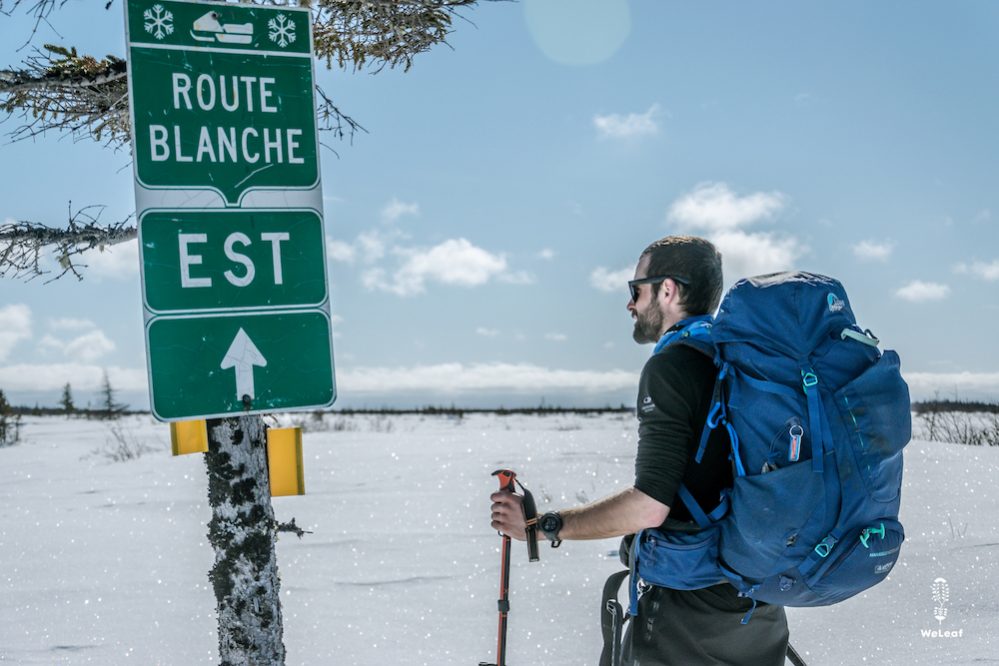
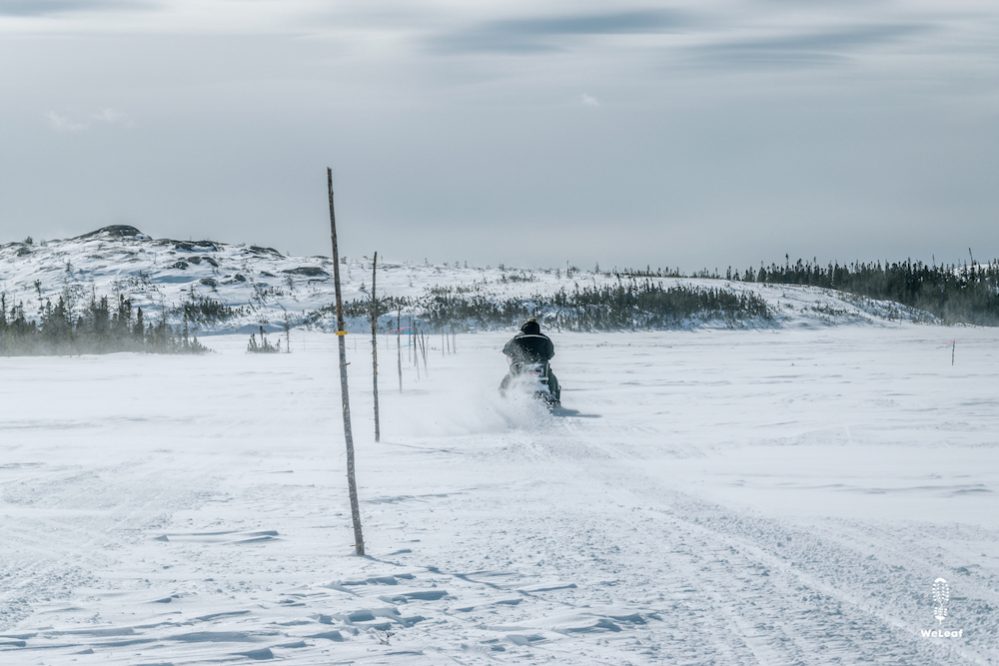
We start the Route Blanche with a “shortcut". Unfortunately we miss the sign that says “start of the route blanche" in three languages: French, English and Innu. Our short route goes over a narrow forest trail and as soon as the trees open we see the white highway in front of us. A row of wooden posts leads into the distance. As far as the eye can see, the road winds ahead of us. The posts are spaced 5 meters apart and there is one lane on each side of the post. It is a two-lane road that is carefully prepared every day by a snowmobile with a large roller behind it. The highway is empty when we enter. "Haha, this is easy" we laugh loudly. "The route is not going to give us any more problems," says Olivier, raising his hand to a snowmobile that passes. By the end of the day, about 40 people have passed us, which is not much, but for us that is a busyness that we had never experienced before. On one of the poles a sign appears “3 kilometers” is written under the symbol of a house. "There we go for lunch" says Olivier. He resets his watch to zero and exactly three kilometers later we are in front of a beautiful red hut. We inspect it and are satisfied that we can sleep inside tonight, because we know that in 8 kilometers there is another shelter. All the emergency shelters are exactly the same. They are square, painted Scandinavian red and the shelter’s number painted in white on the roof. Inside there is one bench on the right wall and in the left corner there is a wood stove. Outside is a pile of fire wood and we also see that there is small wood to start the fire. We make our lunch and immediately see that this trail is different. We know exactly where the huts are, we cannot get lost and in case of emergency there are more than enough people passing us. The trail may be remote, but for us it is a lot easier than the first month on the skis. All we have to do now is ski, no worries if the trail suddenly stops, how the trail will look like or if we find a safe overnight location.
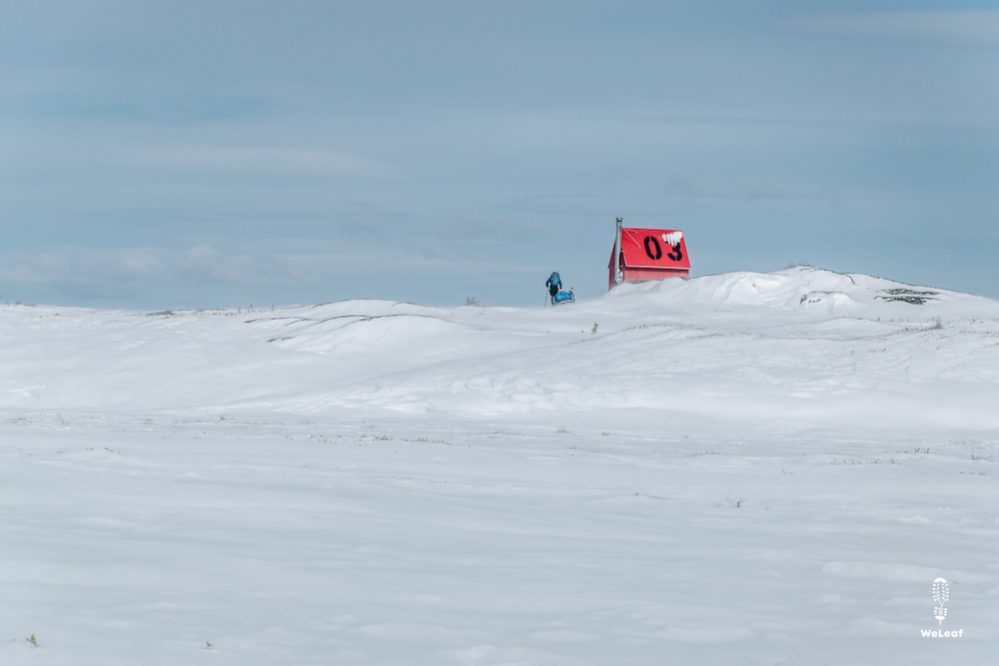
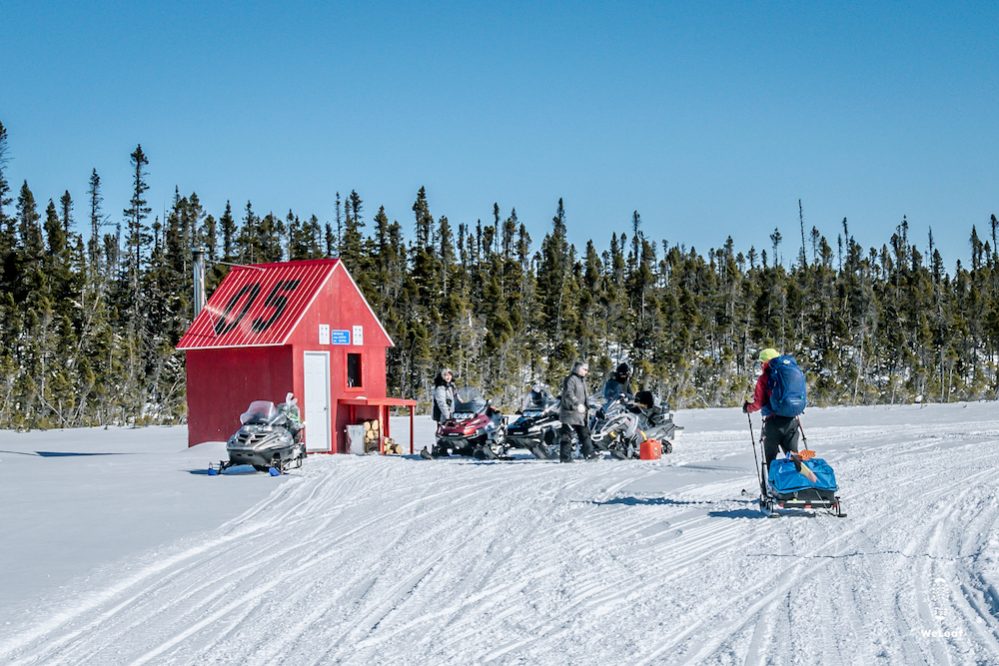
We ski on to the next shelter and move in. The shelters are installed as emergency huts by the Quebec government. Local travelers can warm up here, or find shelter in an emergency. They are not meant as an overnight location, but today there is more than enough wind to accept it as an excuse. Moreover, all locals refer us to the huts, so we feel anything but burdened. Nevertheless, we wait neatly before spreading our mattresses. And that was a smart idea, because we get a lot of visitors. We hear the snowmobile arrive from far away and slowing down as soon as they get closer to the shelter. It is the regular "smokers and pee" break. A kind of petrol station without petrol. We always go outside to have a chat. Many of them are Innu. The next village on our route is an Innu reserve. Innu, means "people" and in French they are also known by the term Montagnais, mountain people. The Innu are the indigenous people of the Low East of Canada. They lived on this land for thousands of years as hunter-gatherers. Their lives depended on the migration of the Caribou, but they also hunted moose, deer, bears, lynx and beavers. They fished for salmon and collected berries, nuts and maple syrup. They were nomads who lived in the mountains but went to the sea in summer with canoes made of birch bark to escape the black flies. They hunted seals and birds' eggs by the sea. Although they used to be nomads, the Innu communities are now on fixed locations. It is the result of the government forcing them to move to designated locations. La Romaine, three days of skiing from here, is one of those reserves. At the table at Charles's place we had already curiously and carefully asked about the relationship between the "white", as they call it, and the Innu's. We noticed a certain love-hate relationship. Together they are neighbours, they help each other and they play ice hockey and bingo, while at the same time there is a feeling of inequality on both sides. Charles was strikingly negative about their attitude to nature. "They don't care," he says. We listen carefully and ask why. We are amazed when we hear that they “they litter everywhere", "they are getting drunk", "they don't work" and “they fish everything empty".
We ski to la Romaine, with a lot of wind every evening. We sleep in the tent and a small snow storm blows over us in the night. In the morning our gear is buried under a layer of snow. It is quite an art to pack our stuff snow-free, but we know that we can let everything dry tonight. We are received by “white people" in the Innu reserve. That is special, because you can only live there if you also do something for the community. They are both teachers. They came there seven years ago with a big heart for the indigenous people, their skills and their vulnerability. Unfortunately, we see a deep emotion of disappointment hidden in their hearts. "It's our fault," says our host, "but they also know all too well how to use it," she adds. We took away their land, we took all the “wild” things out of them (children where taken from their parents and put in boarding schools to ‘learn’ them White manners) and we gave them everything they need to survive: "money, houses, food, tax-free living". "There is no economic incentive. When they go to work, their rent is no longer subsidised. The result is a huge problem of drunkenness, abuse, obesity and illegal trade." She continues, "Children can decide for themselves whether they want to go to school, but there is no motivation. There are many children who do not finish high school, and going to college is an exception. When I ask my students what they want to do later for their family, the answer is “ask the government more money for my family.” This is the vision and truth of the “White,” which is very negative. Our encounters with the Innu are short and superficial so that we don’t hear their vision and truth. But the Innu we speak are cheerful people, families traveling together and a cozy atmosphere. The truth will be somewhere in the middle.
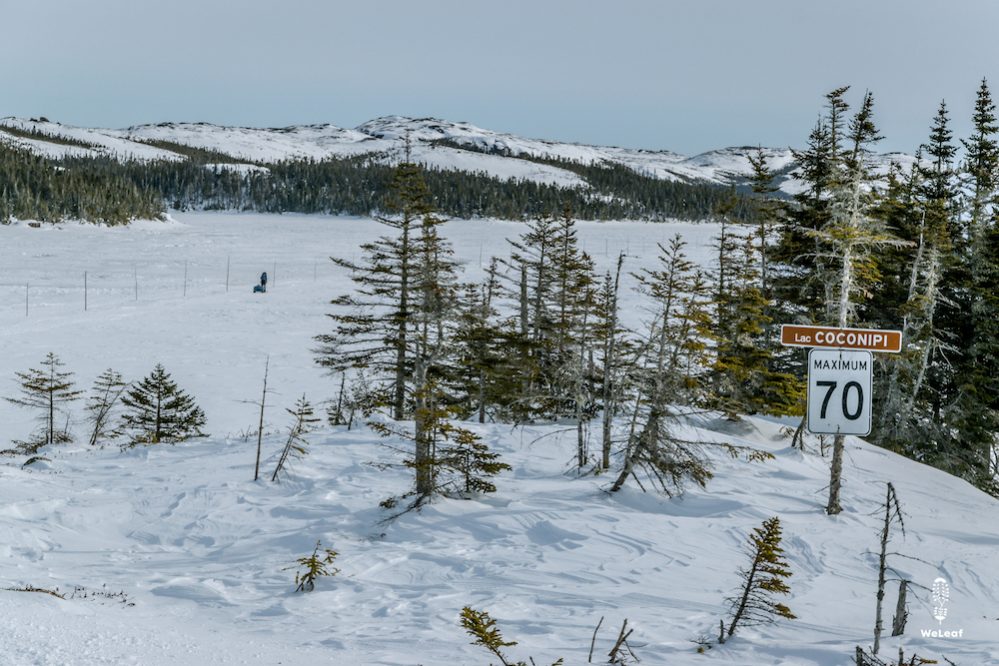
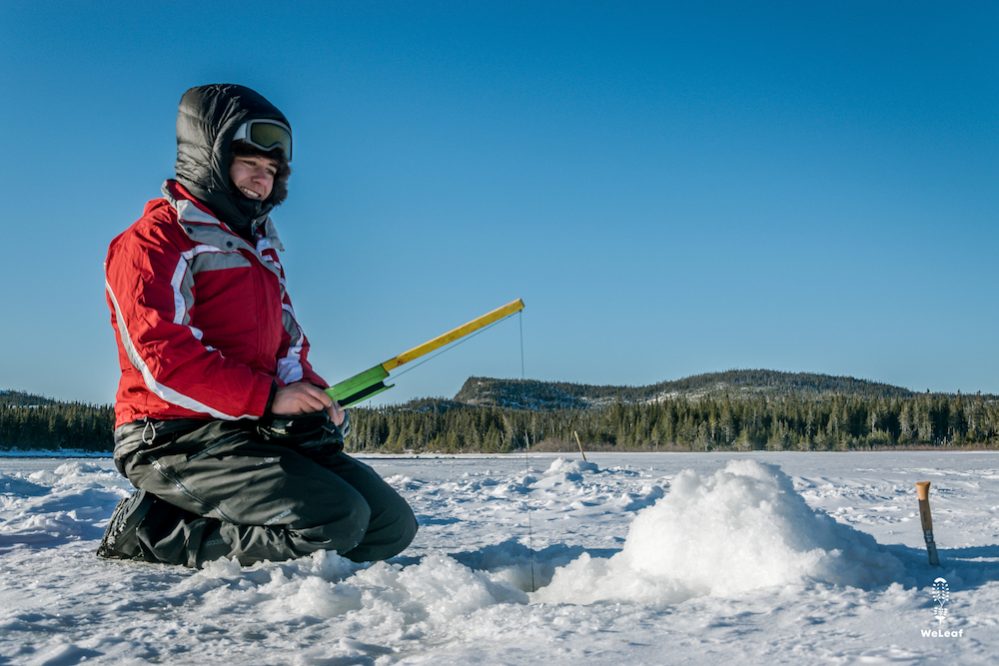
Zoë goes ice fishing the next day with our host. She jumps on the back of the snowmobile and they drive into the wilderness for one hour. An area from here to the North Pole where nothing but forest and water can be found. Clean and free nature. “How far have people been here?" Zoë asks. Everywhere is his answer. He is also constantly looking for undiscovered lakes where he can catch the largest fish because other lakes are almost empty. We race on frozen lakes and look for old holes of Innu fishermen "they know the best spots". When we find one, he will hook a piece of chicken on the line and throw it into the hole. All he does is hop his arm slightly back and forth. Zoë imitates him and after two minutes she has two trout out of the water. People here just let the fish freeze to death. "I don't want that" she says firmly, I want to relieve them of their suffering as soon as possible. With her own knife, she kills the fish by hitting the fish on the head and tearing off the gills with her thumb. The sense of survival dominates the killer feeling. It feels independent, natural and healthy. A group of Innu arrives on the same lake. We drill extra holes and are with eight people for the rest of the day. Zoë already has a satisfied feeling, we have enough fish for us and our host. However, she experiences a different mentality with her fellow fishermen. Everyone, including her host, is looking to catch as much fish and as large as possible. They want more than necessary.
"The white" or "the Innu", we are all the same. Homo means human and "Sapiens" is wise, wise enough to develop technology to live anywhere. Hopefully wise enough to see that happiness doesn't really depend on objective conditions such as wealth, property, health or even social environment. Happiness depends more on the correlation between objective conditions and subjective expectations. If you want an ox wagon and you get one then you are satisfied. If you want a brand new Ferrari and you get a second-hand Fiat, you will feel disappointed. Our high expectations for a comfortable and pleasant life and our low tolerance for discomfort and difficulties have reached such a level that we may feel much more miserable than our ancestors ever felt.
Maybe we should become hunter-gatherers again?
